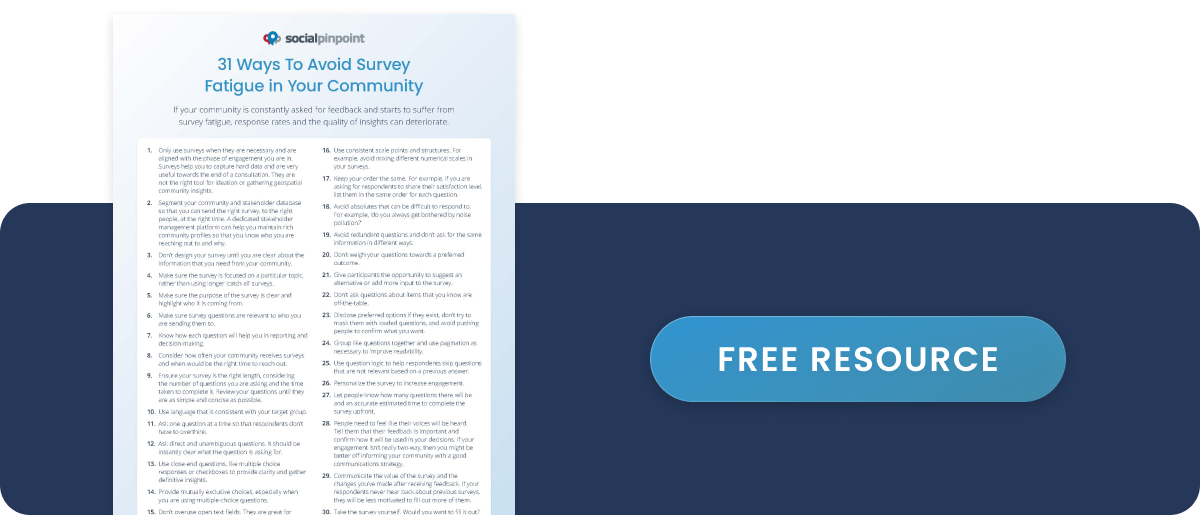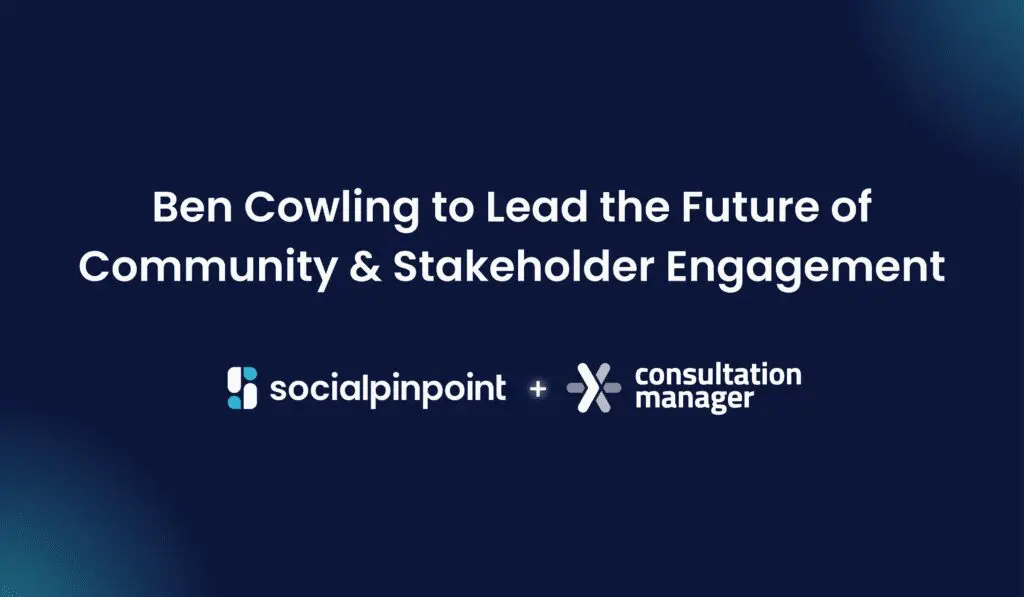Surveys are often used for community engagement and stakeholder research. However, if your community is constantly asked for feedback and starts to suffer from survey fatigue, response rates and the quality of insights can deteriorate.
Surveys allow you to collect community feedback in a quick, easy, and consistent way. Most people are familiar with them and they are simple to set up. However, running surveys too frequently and without a clear purpose can come at a price. Feedback is a gift and every time you ask your community to complete a survey, you are asking for their focused effort and insights. That’s why we need to know why we need a survey before we create a survey and design with our respondents in mind.
What is Survey Fatigue?
Survey fatigue happens when your community becomes bored or uninterested in your survey. This might happen before they take it, especially if they are overwhelmed by the sheer volume of requests for feedback, or it can happen during a poorly designed survey. Therefore, people will drop out halfway or speed through their responses, resulting in inaccurate data.
Demotivating survey respondents to the point where they skip answers or spend less time on them is a waste of budget and an opportunity cost. However, there are simple techniques we can use to ensure your survey is meaningful, functional, and easy to understand.

31 Ways To Avoid Survey Fatigue in Your Community
- Only use surveys when they are necessary and are aligned with the phase of engagement you are in. Surveys help you to capture hard data and are very useful towards the end of a consultation. They are not the right tool for ideation or gathering geospatial community insights.
- Segment your community and stakeholder database so that you can send the right survey, to the right people, at the right time. A dedicated stakeholder management platform can help you maintain rich community profiles so that you know who you are reaching out to and why.
- Don’t design your survey until you are clear about the information that you need from your community.
- Make sure the survey is focused on a particular topic, rather than using longer ‘catch all’ surveys.
- Make sure the purpose of the survey is clear and highlight who it is coming from.
- Make sure survey questions are relevant to who you are sending them to.
- Know how each question will help you in reporting and decision-making.
- Consider how often your community receives surveys and when would be the right time to reach out to them.
- Ensure your survey is the right length, considering the number of questions you are asking and the time taken to complete it. Review your questions until they are as simple and concise as possible.
- Use language that is consistent with your community group.
- Ask one question at a time so that respondents don’t have to overthink.
- Ask direct and unambiguous questions. It should be instantly clear what the question is asking for.
- Use close-end questions, like multiple choice responses or checkboxes to provide clarity and gather definitive insights.
- Provide mutually exclusive choices, especially when you are using multiple-choice questions.
- Don’t overuse open text fields. They are great for discovering how people feel about a topic and provide a good explainer for previous responses, but they are more effort to fill out. Only use them where they are essential.
- Use consistent scale points and structures. For example, avoid mixing different numerical scales in your surveys.
- Keep your order the same. For example, if you are asking for respondents to share their satisfaction level, list them in the same order for each question to avoid confusion.
- Avoid absolutes that can be difficult to respond to. For example, ‘do you always get bothered by noise pollution?’
- Avoid redundant questions
and don’t ask for the same information in different ways. - Don’t weigh your questions towards a preferred outcome.
- Give participants the opportunity to suggest an alternative or add more input to the survey.
- Don’t ask questions about items that you know are off-the-table.
- Disclose preferred options if they exist, don’t try to mask them with loaded questions, and avoid pushing people to confirm what you want.
- Group like questions together and use pagination as necessary to improve readability.
- Use question logic to help respondents skip questions that are not relevant based on a previous answer.
- Personalize the survey to increase engagement.
- Let people know how many questions there will be and an accurate estimated time to complete the survey upfront.
- People need to feel like their voices will be heard. Tell them that their feedback is important and confirm how it will be used in your decisions. If your engagement isn’t really two-way, then you might be better off informing your community with a good communications strategy.
- Communicate the value of the survey and the changes you’ve made after receiving feedback. If your respondents never hear back about previous surveys, they will be less motivated to fill out more of them.
- Take the survey yourself. Would you want to fill it out?
- Have someone else check and complete your survey before you send it to your community.
A reliable online survey tool can help you capture meaningful and actionable feedback. Social Pinpoint’s survey’s use tried and tested question types and custom variables, so you can capture the right information and personalize the experience. Responses are also stored securely and our reporting features make them easy to analyze.












